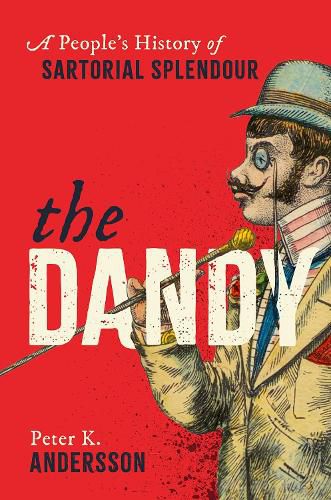Readings Newsletter
Become a Readings Member to make your shopping experience even easier.
Sign in or sign up for free!
You’re not far away from qualifying for FREE standard shipping within Australia
You’ve qualified for FREE standard shipping within Australia
The cart is loading…






A history of the dandy from below, from Beau Brummell and Baudelaire to Bowie and Bolan... and beyond.The historical figure of the dandy has commonly been described as an upper-class gentleman, often exemplified by well-known men such as Beau Brummell, Charles Baudelaire, Oscar Wilde, and Max Beerbohm. But there is a broader history to be told about the dandy - one that incorporates unknown men from the lower strata of society. The Dandy: A People's History constitutes the first ever history of those dandies who emanated from the less privileged layers of the populace - the lowly clerks, shop assistants, domestic servants, and labourers who increasingly during the modern age have emerged as style-conscious men about town. Peter Andersson shows that dandyism is far from just an elite phenomenon represented by famous poets and artists. He shows how dandyism as a popular youth subculture grew into an influential cultural movement, from the days of Beau Brummell in the early 19th century to the age of mods in the 1960s. A series of fascinating in-depth studies of the wide variety of dandy subcultures that have surfaced around the world in the last two centuries tell the story of how the shaping of fashions and the image of men became increasingly democratized, with the arbiters of taste increasingly coming from the other end of the social spectrum. Along the way, we encounter such long-forgotten groups as the mashers, the knuts, the Paris gandins and the Berlin transgender dandies, alongside more well-known but unexplored figures like the zoot suiter, the teddy boy, and the New Romantic. Above all, this is a story of how fundamental aspects of modern culture such as fashion, style, and conduct have been shaped from below just as much as from above. It is a story that shows how the problematic business of young men trying to find an identity is an enduring phenomenon - and one sadly often accompanied by innocent victims along the way.
$9.00 standard shipping within Australia
FREE standard shipping within Australia for orders over $100.00
Express & International shipping calculated at checkout
A history of the dandy from below, from Beau Brummell and Baudelaire to Bowie and Bolan... and beyond.The historical figure of the dandy has commonly been described as an upper-class gentleman, often exemplified by well-known men such as Beau Brummell, Charles Baudelaire, Oscar Wilde, and Max Beerbohm. But there is a broader history to be told about the dandy - one that incorporates unknown men from the lower strata of society. The Dandy: A People's History constitutes the first ever history of those dandies who emanated from the less privileged layers of the populace - the lowly clerks, shop assistants, domestic servants, and labourers who increasingly during the modern age have emerged as style-conscious men about town. Peter Andersson shows that dandyism is far from just an elite phenomenon represented by famous poets and artists. He shows how dandyism as a popular youth subculture grew into an influential cultural movement, from the days of Beau Brummell in the early 19th century to the age of mods in the 1960s. A series of fascinating in-depth studies of the wide variety of dandy subcultures that have surfaced around the world in the last two centuries tell the story of how the shaping of fashions and the image of men became increasingly democratized, with the arbiters of taste increasingly coming from the other end of the social spectrum. Along the way, we encounter such long-forgotten groups as the mashers, the knuts, the Paris gandins and the Berlin transgender dandies, alongside more well-known but unexplored figures like the zoot suiter, the teddy boy, and the New Romantic. Above all, this is a story of how fundamental aspects of modern culture such as fashion, style, and conduct have been shaped from below just as much as from above. It is a story that shows how the problematic business of young men trying to find an identity is an enduring phenomenon - and one sadly often accompanied by innocent victims along the way.
Explore the Early Modern period, which includes fascinating chapters of history like the Renaissance, Shakespearean England, the French Revolution, and the American Civil War.